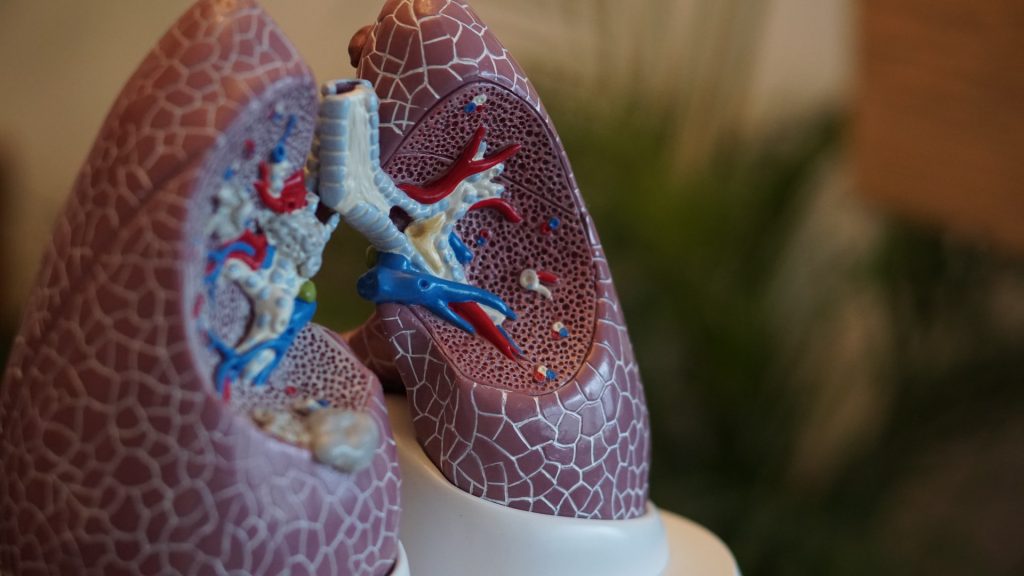
Researchers from Japan have found a protein that promotes the development of the early stages of emphysema, which could prove to be a target for treatment of the serious disease.
Chronic obstructive pulmonary disease (COPD) causes illness and death worldwide, and is characterised by destruction of the alveolar walls in the lungs, known as emphysema, resulting in lung function declining and to date little is known about how it develops. The Global Initiative for chronic obstructive lung disease (GOLD) has defined COPD as “a common, preventable, and treatable disease that is characterised by persistent respiratory symptoms and airflow limitation that is due to airway and/or alveolar abnormalities usually caused by significant exposure to noxious particles or gases.”
It is known that COPD can be triggered by certain environmental factors, such as cigarette smoking, which result in lung inflammation. The development of inflammation involves the movement of molecules inside cells, and this “intracellular trafficking” is known to play a part in some diseases. The team searched for COPD-related proteins that are involved in trafficking and identified a protein called FCHSD1, which not known to have any lung function but is associated with some diseases.
The researchers deleted the FCHSD1 protein in mice and studied these mice against normal mice when emphysema was induced. In normal mice, a large increase was seen in FCHSD1 after treatment, while mice lacking FCHSD1 were protected from the development of emphysema. These mice showed less airspace expansion from damaged air sacs, and had less inflammation and reduced apoptosis.
The researchers went on to investigate the molecular mechanism by which FCHSD1 acts. In response to stress, a protein called NRF2 moves into the nucleus to protect it. However, FCHSD1 binds to NRF2, stopping it from moving to the nucleus. “Mice with a FCHSD1 deficiency showed enhanced nuclear translocation of NRF2 and a smaller reduction in SIRT1 levels, which is seen to occur as emphysema develops,” explained lead author Takahiro Kawasaki, “and this reduced inflammation and apoptosis of lung cells.”
Increasing the activity of NRF2 to counteract FCHSD1 could therefore be a potential therapy for COPD. Treatments are currently available that target NRF2, and inhibiting FCHSD1 while targeting NRF2 could enhance these treatments and prevent systemic complications. “Our findings may also lead to a specific therapeutic strategy to ameliorate, or even halt, the progression of emphysema by inhibiting FCHSD1,” said Takashi Satoh, senior author of the paper.
Source: EurekAlert!

